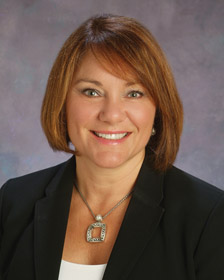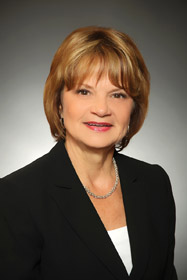Hospitals are working to speed up recovery time and ensure long-term wellness.
Health care across the United States continues to undergo dramatic changes, and the cost is front and center in the national conversation. No matter what your personal stand is on health care reform, most everyone agrees change is long overdue.
 The mixed public-private health care system in the United States is the most expensive in the world, with health care costing more per person than in any other nation, according to an online search. In spite of the cost, our country lags other wealthy nations in overall performance. (See “Did You Know?” below.) In-patient hospital stays cost approximately $3,100 per day per patient, according to Kaiser State Health Facts. What’s more, one in five elderly patients is readmitted to the hospital within 30 days of leaving. That adds up to 2.3 million rehospitalizations per year, racking up more than $17 billion in annual Medicare costs, according to a study in The New England Journal of Medicine.
The mixed public-private health care system in the United States is the most expensive in the world, with health care costing more per person than in any other nation, according to an online search. In spite of the cost, our country lags other wealthy nations in overall performance. (See “Did You Know?” below.) In-patient hospital stays cost approximately $3,100 per day per patient, according to Kaiser State Health Facts. What’s more, one in five elderly patients is readmitted to the hospital within 30 days of leaving. That adds up to 2.3 million rehospitalizations per year, racking up more than $17 billion in annual Medicare costs, according to a study in The New England Journal of Medicine.“It’s clear that health care is causing an increasing economic burden,” says Peter Brett, M.D., a medical oncologist at Sutter Santa Rosa Regional Hospital. “It’s hard to afford anymore, so one important goal is to minimize cost. The ideal is to move toward prevention, education and surveillance to detect disease early. We’re just at the beginning of this. Medicine has been treatment-oriented for a very long time, and there hasn’t been an incentive [from insurers] toward prevention and education,” he says.
“There’s no question that the cost of health care is high,” adds Gregg Hopkins, M.D., a cardiologist at Sutter Santa Rosa Regional Hospital and director of noninvasive cardiovascular services. “It’s excessive in most people’s opinions and that comes from many different sources¾medication, technology, insurance issues and hospital costs.”
“Escalating costs are, in part, a result of a disease-centric model,” says James Neel, M.D., medical director of population health for St. Joseph Health in Sonoma County. “In response to rising costs, health care is focusing more on care management across the continuum of services, health maintenance and patient engagement. One goal is to more fully involve patients in their own care.”
As a result, health care in the United States, including the North Bay, is changing in two key ways. First, there’s a move to educate people to adopt healthier lifestyles and engage them in the management of their health. Second, to help slow rising costs, government has shifted risk back to the providers.
Lowering hospital readmissions
The driving force behind lowering unnecessary readmissions can be attributed to the government’s readmissions reduction program, which was added to a section in the Affordable Care Act (ACA), enacted in 2010, to reduce payments to hospitals with excessive readmissions. A total of 2,610 hospitals in the United States will see their Medicare payments docked in fiscal year 2015 for having excessive numbers of patients return to the hospital within 30 days of discharge, according to a report by the Centers for Medicare and Medicaid Services (CMS). (This is the third year CMS has instituted the penalties to promote better outcomes in the nation’s hospitals.)

“The Affordable Care Act creates incentives for hospitals to shift from acute care to a focus on keeping patients healthier and out of the hospital,” says Dana Codron, R.N., executive director of the community outreach department at Queen of the Valley Medical Center in Napa, who adds that being in the hospital is one of the most expensive places to receive care. The goal is to successfully discharge patients so they don’t return unnecessarily.
“Hospital stays are brief and can feel like a whirlwind for the patient,” she says. “Changes in medications, new doctors and instructions for lifestyle changes, such as dietary restrictions, can be confusing once the patient goes home. And a delay in filling a new prescription or even changes to dosage of a current medication can result in a readmission to the hospital within days. To have an impact, hospitals across the nation are implementing programs that follow up with the patient after discharge.”
Transitional care
St. Joseph Health operates three hospitals in the North Bay (Santa Rosa Memorial Hospital, Petaluma Valley Hospital and Queen of the Valley Medical Center), and the focus these days is transitioning patients following acute care to minimize readmissions when possible.
“The transitional care program helps patients avoid readmissions within 30 days,” explains Codron. Queen of the Valley’s concept for transitional care began 20 years ago when the CARE Network was introduced. (CARE stands for Case Management, Advocacy, Resource & Referral and Education). At the time, the CARE Network was initiated to help chronically ill, low-income patients manage their disease successfully at home, often after release from the hospital, says Codron.
“The goal was to provide education and support after being discharged from the hospital by providing home visits and support, using nursing and social services. We recognized early on that if our patients are worried about paying for rent and food, then a co-pay for medications or doctor appointment falls lower on the priority list,” adds Codron.
Queen of the Valley received national recognition for reducing readmissions. In 2013, it was invited by the Robert Wood Johnson Foundation to Washington, D.C., to speak on a panel about reducing avoidable hospital admissions and emergency room visits, says Codron.
The CARE Network provided a strong platform to launch a transitional care program. “Avoiding hospital readmissions is the right thing to do. It’s part of extending care beyond the hospital walls to ensure the health of the community we serve,” says Codron. As a result, St. Joseph Health Queen of the Valley offers transitional care to all patients at risk for readmissions following inpatient care and assigns a health coach.
Based on the nationally recognized Coleman Care Transition model, a health coach helps transition the patient from the hospital to home in four key areas. First, the coach makes sure each patient has the correct medication, is knowledgeable about it and takes it precisely. Second, patients learn about their disease (such as diabetes or heart failure), so they can identify any warning signs and know what to do if there’s a problem. For example, patients who’ve experienced heart failure are advised to weigh themselves each morning. If they’ve gained two or three pounds overnight, they know to call the doctor because it could be a sign of trouble.) Third, health coaches ensure patients schedule follow-up physician appointments after a hospitalization. And finally, health coaches help patients create a personal health record with a list of current medications, important health information and emergency phone numbers to take with them to doctor appointments.
In recent years, St. Joseph Health has received national recognition for its efforts, part of which can be attributed to transitional care. In 2013, Santa Rosa Memorial Hospital was again named the third best hospital in the United States for heart attack treatment by Becker’s Hospital Review, based on criteria used in ranking the top 50 hospitals in the country with the lowest percentage of hospital readmissions 30 days after discharge for heart attack patients.
Patient education
Sutter Santa Rosa Regional Hospital places a strong emphasis on patient education these days. The goal is to keep people healthy and prevent disease before it happens, but also to keep them informed and knowledgeable of the best strategies to use when acute care is needed.
The HeartWorks program at Northern California Medical Associates is a rehabilitation program focused on helping patients adopt a healthier lifestyle after a cardiac event such as a heart attack or bypass surgery. The program provides a structure for patients to develop an exercise program, lose weight and learn dietary strategies to maintain a healthy heart. “Starting within one month of when patients are discharged from the hospital, we encourage everyone to go three times per week for 12 weeks,” says Dr. Hopkins, director of the noninvasive cardiovascular services at Sutter. “Some patients continue to come, using it as a health club. It’s as much for the soul as it is for the heart,” he says.
In a report released by the California Hospital Association this spring, Sutter ranks high in both statewide and national statistics with lowering readmissions 30 days after discharge for heart attack patients. Only 15.4 percent of Sutter’s patients are readmitted following a cardiac event, ranking it as the second best hospital among 206 California hospitals. And only 20.2 percent of patients are readmitted following a diagnosis of congestive heart failure, ranking it 19th out of 279 California hospitals.
Sutter also takes a proactive approach with cancer patients to provide them with more targeted care to keep them out of the hospital. “We used to fill the hospital with cancer patients. Now we have a much smaller inpatient population; most are seen on an outpatient basis,” says Brett. New treatments, such as the programmed cell death protein 1 (also known as PD-1), activate the immune system to attack tumors and are used to treat cancer. “This [treatment] will have a big impact on improving patient health and curing cancer,” he says.
Following cancer treatment, Sutter’s Survivorship Program focuses on minimizing long-term complications such as heart damage, neuropathy (pain in nerves) and premature menopause. “We’re better at managing these potentially serious issues,” he says. “For example, we can avoid many of these complications by using cancer treatments that target the tumor specifically rather than attacking the heart or nerves. Should heart or nerve damage develop, we have treatments, including medications, exercise and dietary change, that can minimize the impact of these complications on a person’s life. We’re smarter in using ways to help preserve a young woman’s fertility, even if she has to go through strong cancer treatment.”
The Survivorship Program also promotes lifestyle modifications to lower the chance of cancer reoccurring. Research shows there’s a strong correlation between improved outcome and smoking cessation, eating a diet rich in fruits and vegetables, regular exercise and drinking alcohol in moderation, says Brett.

About a year ago, Sutter also implemented the Joints Plus Program to streamline care for patients undergoing knee or hip replacement. The program includes a Pre-Op Class to prepare them for surgery and what to expect. “There’s a lot of anxiety about the procedure, so having the preparation class is helpful,” says Briant Smith, M.D., an orthopedic surgeon at Sutter Medical Group of the Redwoods and medical director of the program.
According to Smith, the recovery time following joint replacement surgery has changed dramatically in the past two decades. “Twenty years ago, surgery took longer, incisions were longer and a patient could expect to spend a week or two in the hospital following surgery,” he says. “Now incisions are half the length, and most patients are home within one to three days following surgery.”
Recovery times have improved as well, as new techniques are used to get patients walking again. “We encourage an active recovery process,” says Smith. “Patients are encouraged to get out of bed and walk within hours of surgery.” The biggest obstacle is pain, but he says that’s improved with a multi-modal approach to pain. “Controlling the pain lets patients move more. They’re shocked and surprised—in a good way. We’re getting better outcomes with more accelerated rehabilitation.
“Three months after surgery, Sutter hosts a reunion lunch for patients. Most everyone comes back to share their experience, we get feedback, and the patients love it,” he says.
In addition, robotic surgery, which is new to the hospital, is designed to accelerate the recovery process. “It allows for more precision and smaller incisions in hip and knee reconstructive surgery. It’s also being used for other areas such as general, urologic and gynecologic surgery. We just started using it this year. There’s a lot of potential and applications will expand,” says Smith.
A focus on prevention
Kaiser Permanente continues to focus on helping its members stay healthy. Preventive health screenings such as mammograms and home-based colon cancer screenings—as well as gathering information from members about alcohol consumption, exercise and body mass index—all contribute to physician-patient conversations about healthy lifestyles. And the focus on screenings can lead to early detection and treatment before the need for a hospitalization arises.

“The goal is to provide personalized, high-quality, affordable care at the right time in the right place,” says Judy Coffey, R.N., senior vice president and area manager at Kaiser Permanente Marin-Sonoma. Its focus on disease prevention has resulted in an average of 300 fewer patients needing to stay in Kaiser’s Northern California hospitals every day as compared to 10 years ago.
As for reducing readmissions, its electronic medical record system helps it track, monitor and improve readmission rates. “We’re far below the 2009 reported rate of 20 percent; we’re currently running at approximately 10.7 percent,” says Coffey. “Not only are we able to track readmissions, but we also know where our discharged patients go, whether it’s home or to a skilled nursing facility, home health care or hospice. That information helps us ensure members and patients are receiving care and healing in the right setting.
“We also know that family and friends help patients heal more quickly and with fewer complications,” she continues. “That’s why we’ve done away with traditional visiting hours in our hospitals; visitors are welcome 24/7.”
In the spirit of making healthy lifestyle choices, Kaiser Permanente recently launched the 50,000 Quitters campaign to help patients who currently use tobacco to quit by the end of this year. The campaign was initially rolled out in departments that see the largest number of patient smokers. The hospital identified current smokers through screening and documenting their current status and smoking history. Patients were advised to quit and connected to a support system, including wellness coaches and treatment plans that combine behavioral strategies and cessation medications.
Does Kaiser Permanente’s approach to health care work?
“Our members have a 30 percent lower risk of dying from heart disease, a 10 percent lower risk of dying from cancer and a 40 percent lower chance of experiencing a stroke, compared to those who aren’t Kaiser Permanente members,” says Coffey. What’s more, from 2001 to 2010, Kaiser Permanente Northern California increased the percentage of patients with high blood pressure whose symptoms were under control from 44 percent to 87 percent. During the same time period, stroke mortality dropped by 42 percent; heart attacks by 24 percent and the most serious type of heart attack dropped by 62 percent.
The future of health care
As health care continues to undergo a paradigm shift, what can we expect in the future?
“Hopefully, it will lower the cost of care globally,” says Brett. “In the future, as health care becomes more integrated, it will both lower the cost and improve the health of people—a win-win for everyone.”
“People are making the connection between health and lifestyle,” says Hopkins. “A generation ago, people saw things vastly different. Doctors were making cigarette commercials, no one was exercising and there was no attention to reducing fat in the diet.” Today, smoking is down, people are exercising and eating habits are a popular topic on talk shows and in newspapers. “But ironically, obesity has increased and continues to be something folks struggle with. There are myriad popular diet books and programs to help people lose weight, but reducing caloric intake remains the bottom line,” he says.
“Many of us believe the changes taking place today are important,” says Neel. “We hope to save money while improving people’s health and their health care experience. But it takes time. We’re still in-process.”
Did You Know?
The World Health Organization (WHO) ranked the United States’ health care system 37th in overall performance and 72nd by overall level of health in 2000, according to an online search. This country pays twice as much for health care, yet lags behind other wealthy nations in life expectancy and has a higher rate of infant mortality.
Take Charge of Your Health
Taking charge of your own health is the best way to prevent illness and disease, according to North Bay doctors. “Historically, a patient goes to the doctor, and the doctor is responsible for making them better,” explains James Neel, M.D., of St. Joseph Health. “But patients can play an important role in helping manage their own health. Participate in your health care. Don’t be passive observers.” Here are a few strategies to stay healthy and out of the hospital.
Stop smoking. Tobacco is the world’s leading cause of preventable death and is responsible for one in five deaths in the United States.
Adopt a healthy diet that’s mostly plant-based. Limit alcohol, fatty foods and refined sugars.
Maintain a health body weight and exercise at least 150 minutes each week.
Avoid excessive sun exposure. Wear sunscreen and cover up when you spend time outdoors.
Get regular checkups and routine cancer screening tests. Check with your primary care physician to learn what screenings are appropriate and how often.
Be informed. If you have a chronic condition such as high blood pressure, diabetes or congestive heart failure, work with your health care provider to eliminate or minimize the impact of your illness.
Author
-

Karen Hart is the editor of NorthBay biz magazine, keeping her finger on the pulse of the North Bay, directing content and leading day-to-day operations of the editorial team. An award-winning writer, Karen brings more than 30 years of experience to the position. She is a member of the California Writers Club, and serves on the Journalism Advisory Council at Santa Rosa Junior College. She moved to Sonoma County in 2000, and she’s here to stay.
View all posts



